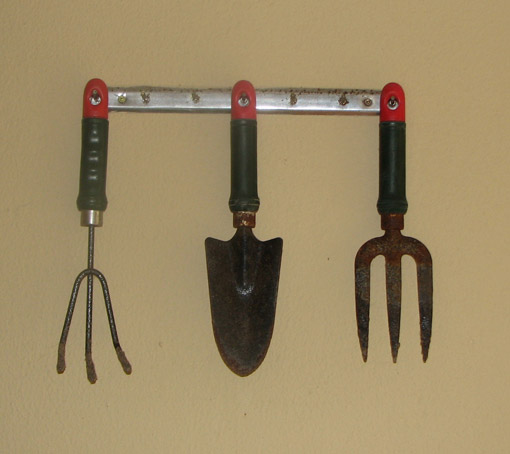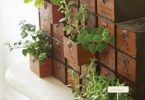 Text by Lori Broadfoot
Text by Lori Broadfoot
Before purchasing any hand-held garden implement, it’s important that you actually hold it in your hands. Determine if the weight and design will still feel ‘right’ after hours of use. A tool that leaves your hands blistered and sore is no bargain and cheaply made implements will bend and break, leaving you frustrated and forced to use the wrong tool for the job at hand.
Ask other gardeners about their favourite tools and brands, and try them out in their gardens if you can. Who would refuse help with the gardening chores? Test drive that spade or weeding hoe by using it in actual dirt, not simply waving it around in an aisle of a retail store. When you shop for your own tools you will have a better feel for what sizes and configurations will work best for you.
A garden spade, used to dig and prepare soil for planting may be the first implement you will need in any garden. The size and shape of the scoop end will vary from flat to spoon-shaped, and handles are either straight to the end, or finished with a d-shaped grip.
A four-tined pitchfork must be built to withstand the rigors of lifting large clumps of plant and garden material. Tines that bend or a handle that is the wrong length will make these heavy chores harder or even impossible.
Forks and spades are available in many ergonomic and lightweight yet sturdy designs, and some may have a lifetime replacement guarantee. Invest in the best-made tool for your budget and you won’t need to replace it and spend more money in the end.
Rakes are used to skim over surfaces either removing debris or levelling the soil. A flathead metal rake in a traditional design is the most common for general garden use. A fan rake is used for pulling leaves into piles and general cleanup of lightweight materials, and may be found in bamboo, plastic or with adjustable, spreading wire tines. Special de-thatching rakes have sturdy flat tines that will pull up compacted thatch and dead grass from lawns.
Long-handled hoes can be found in more shapes and sizes than perhaps any other garden implement, with a corresponding array of descriptive names. Collinear, onion, finger, loop and diamond, all describe hoes with specific purposes in mind. Basically a hoe is a digging implement, used to lift a small amount of dirt at a time, and the blade can also be used to push and pull dirt around growing plants, uproot weeds, or tap the earth into place over newly planted seeds. A hoe with a smallish head will give you more flexibility for digging around tender plants, and you can look to purchasing specialized hoes when you have a more established garden routine.
A hand-held trowel is like a miniature spade, with a pointed, curved blade and a handle that fits easily in your hand. The handle may be made of wood or be an extension of the metal blade, but comfort is most important. This is one tool you will use most frequently, owing to its versatility, used as a digger and a mini soil mover. A stainless steel blade will have the strength not to bend with use, will remain sharp and can be easily wiped clean after use. A trowel may be the most versatile, but you can find hand-held garden implements in many special-use designs – weed forks, bulb planters and cultivators. It should be easy to find many hand-held tools designed for comfort of use, constructed to last, while still being very affordable.
Hand-held pruners are like large scissors, used to cut through plant stalks and small tree branches. Referred to as by-pass pruners, the blades give a clean even cut, and won’t crush or tear stems, which would leave a plant susceptible to disease and pest infestation. While a spring holds the tool in an open position when in use, most pruners have a locking mechanism to hold the blades closed for storage.
Pruners can now be found in both right and left-handed models, and many different sizes and blade shapes are available. Determine the proper sized pruners for your needs and purchase the best-designed model you can afford. Ill-functioning pruners will destroy tender plant stems and leave your hands fatigued.
Quality garden implements will have long enough handles to suit an above average height person. A too-long handle can be easily shortened if necessary, whereas lengthening would be a problem. The angles of tines and blades can also be varied to suit the user.
Keep all blades sharpened, wipe off water and dirt when you are finished using them, store out of the weather and all implements will reward you with years of productive use. A splash of brightly coloured paint on the handles of your garden tools will keep them visible among the greenery and they will be easy to identify if you lend them to other gardeners.
Latest posts by Canadian Home Trends (see all)
- Dining Room Design Tips - July 13, 2025
- Practical Luxury in Forest Grove - July 13, 2025
- The Hidden Value of Great Design - July 13, 2025







I’m looking for a handheld loop hoe. I have one manufactured in Canada with Lov A Hoe on the side. My favorite tool and I would love to find more for spares and gifts. Thanks for any help